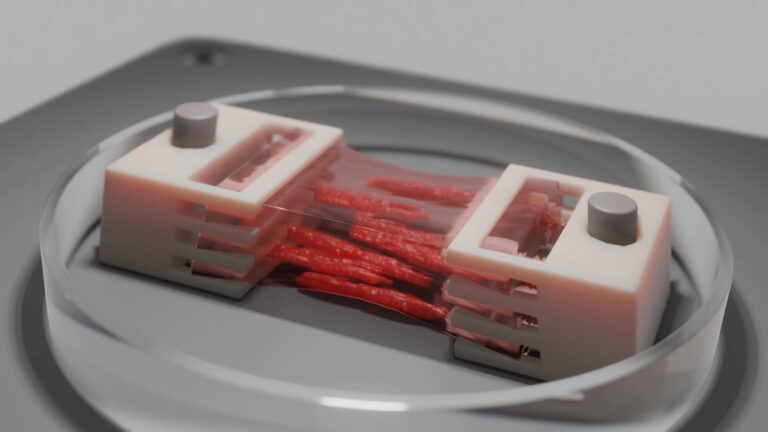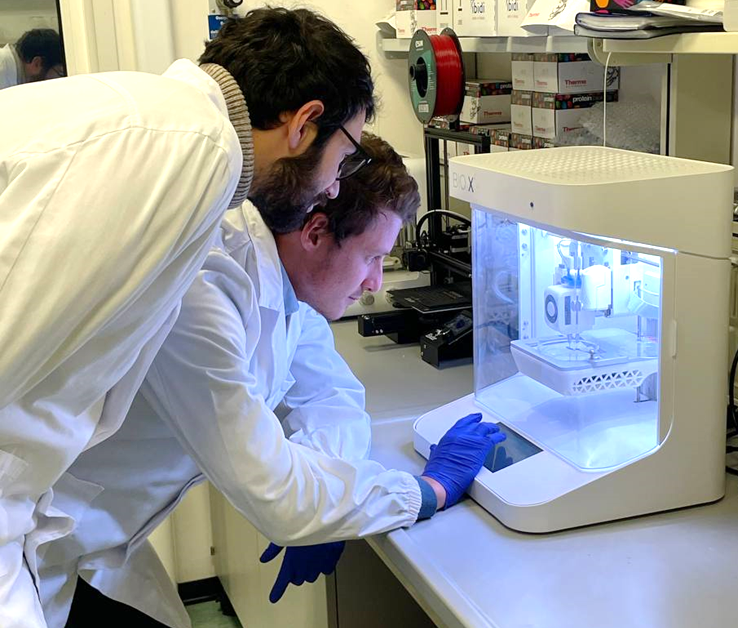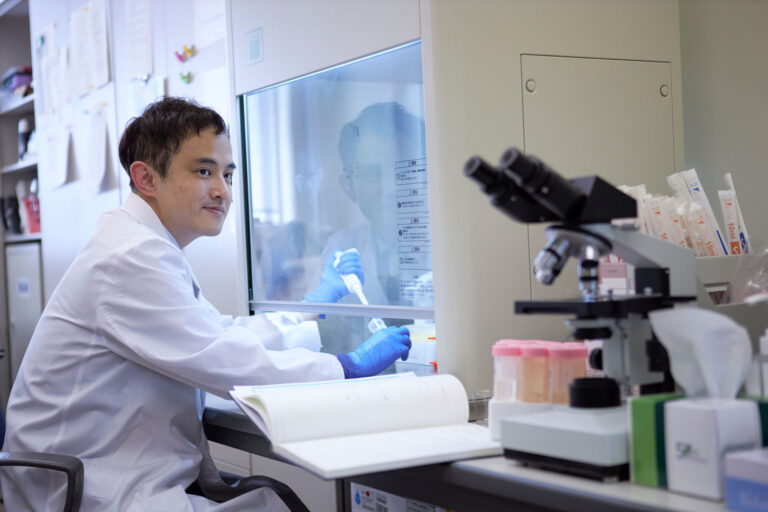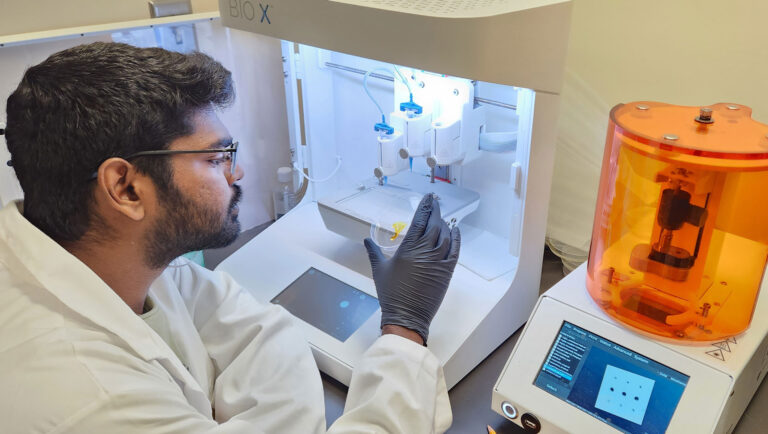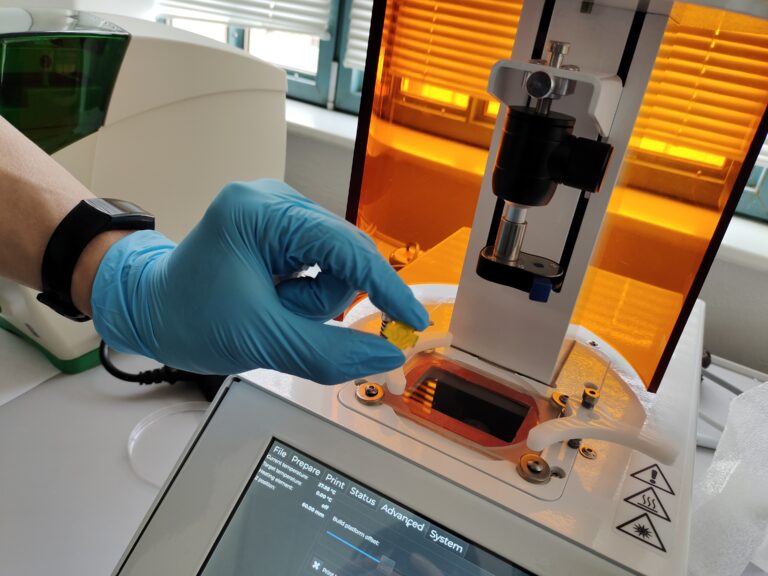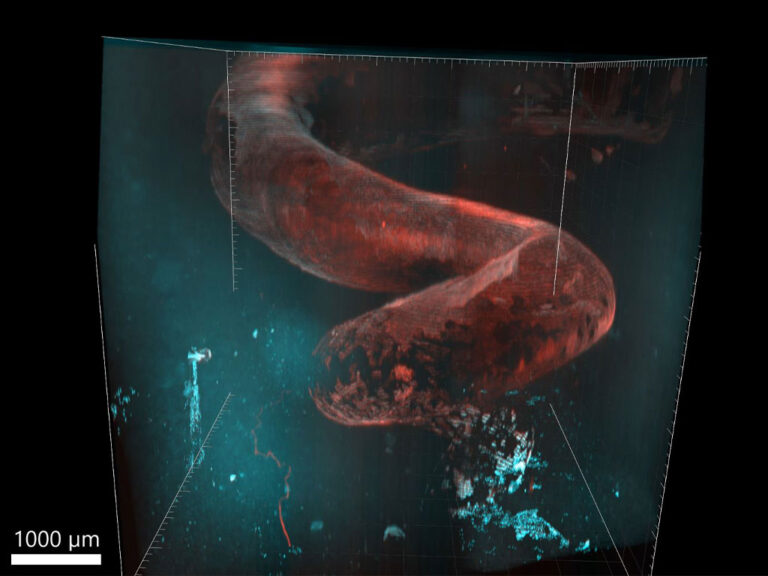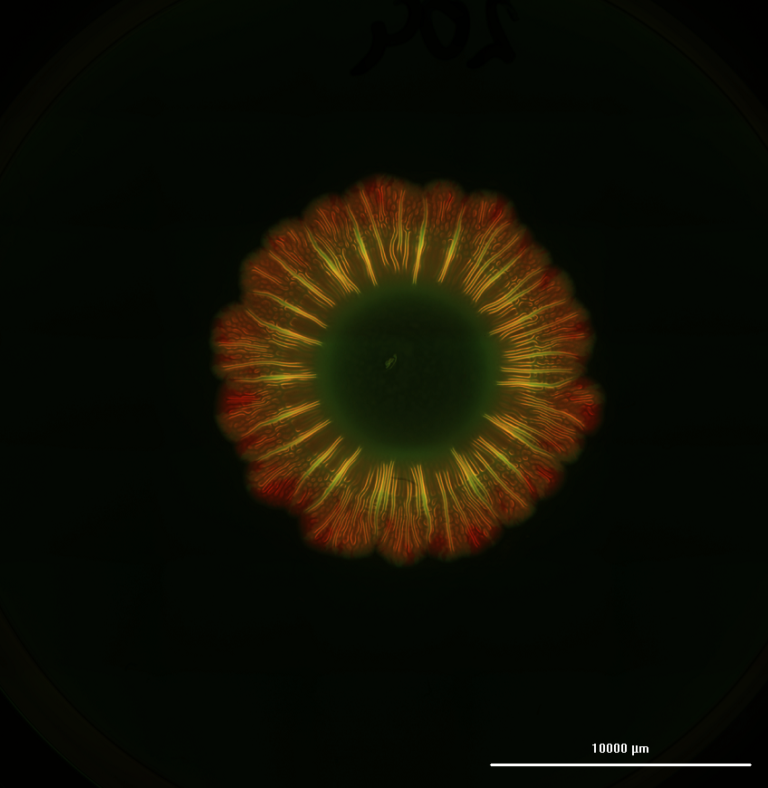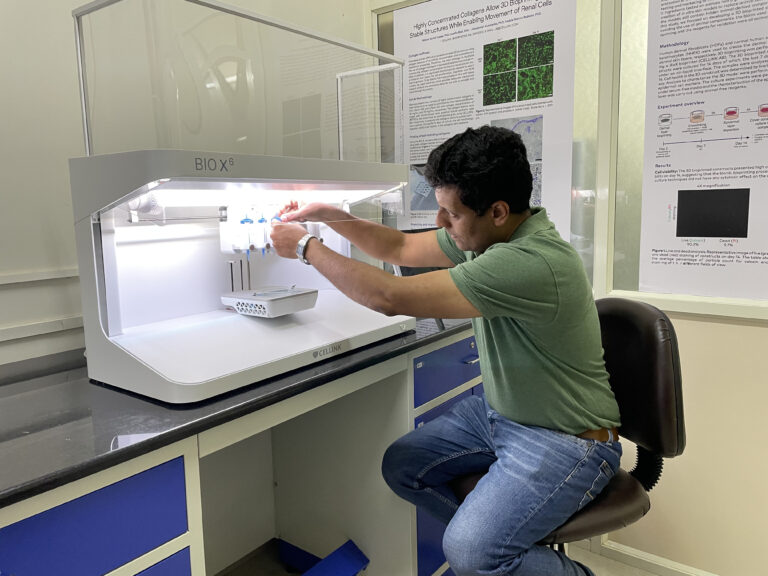Stretchable Electronics through 3D Bioprinting
Over the last century, electronics have rapidly become a normal part of most of humanity’s everyday life. Light bulbs, refrigerators, smart phones. And wearable trackers such as smartwatches and glucose monitors. With rising interest in wearable devices, soft and stretchable electronics show exciting potential in expanding the comfort, accuracy and applications of electronic tracking.
Professor Steve Park from Korea Advanced Institute of Science and Technology (KAIST) is heavily involved in the study of stretchable electronics, and his lab has published multiple ground-breaking publications on both soft electronics and biosensors.
In this customer spotlight, we take a deeper look at how the BIO X6 3D bioprinter has helped Professor Park and his research group realize their novel ideas, expanding their research. We also highlight the compelling results of their work.
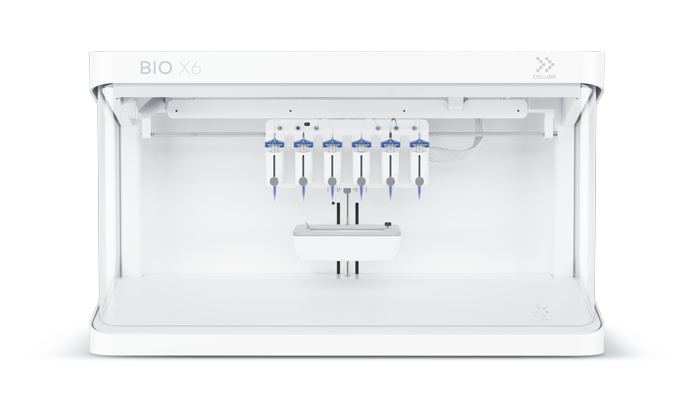
What are stretchable electronics?
Stretchable electronics are electronics that can be stretched, twisted, bent, or compressed, all while keeping their functionality. These are typically developed for wearables such as biosensors, other medical devices, soft robotics, and flexible displays. Over traditional electronics, we see benefits primarily in the conformability and durability, where the stretchable device could be integrated onto irregular surfaces, while withstanding mechanical stress better than rigid electronics.
Professor Park specifically highlighted the comfortability of stretchable electronics as a key benefit, saying, “Right now, a lot of electronics are rigid, so they are uncomfortable to wear. Current displays are also rigid, so they have limited portability and usage. If you can make electronics stretchable and increase their form factor, it would really expand the applicability of electronics.”
There are two main challenges with stretchable electronics: manufacturing and materials.
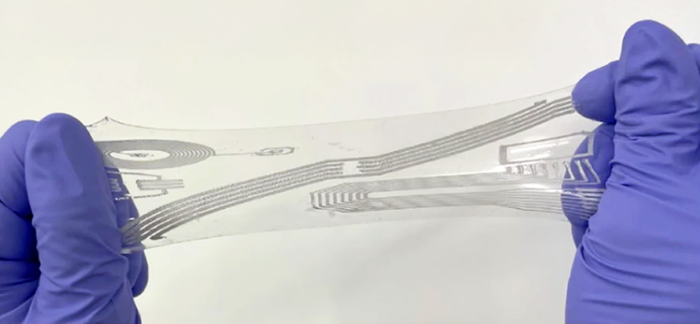
"I am all for printing"
The manufacturing of stretchable electronics can be quite complex, but Professor Steve Park sees a lot of potential in 3D printing. Unlike photolithography, which involves many steps to make complex circuits, 3D printing with CELLINK’s BIO X6 means that you can develop complex circuits of multiple layers with a minimal number of steps. This enables his team to rapidly test different ideas very quickly.
Professor Park does cite the difficulty in coming up with usable materials and iterates that a lot of thought and engineering must go into the design of the material. “For instance, if you have one ideal material and combine it with another ideal material, the combinations of these two ideal materials might not work. You need a lot of experimentation. There is only so much theory can do.”
Tuning the knobs
Soft Electronics
In a 2022 publication in Nature Communications, titled “Rapid meniscus-guided printing of stable semi-solid-state liquid metal microgranular-particle for soft electronics”, Professor Park’s team developed a novel printing strategy.
The novel idea would be to heat the BIO X6’s printbed during the printing process, in such a way that the bioink would partially evaporate. This meant careful consideration of the composition of the bioink, as they would need it to be very stable. The properties of the ink needed to enable the printing of very fine, conductive structures.
To achieve this, the team developed a “PaLMP” ink, which consisted of Liquid Metal particles, poly-styrene sulfonate, and water with 10% acetic acid.
Heating the printbed made the solvent evaporate, enabling the printing of the fine structures. In addition, the heating also merged the Liquid Metal particles together, making the entire structure conductive.
The printed structure also showed great stretchability. As a Proof-of-Concept, the researchers printed electronic skin, or “e-skin”. This e-skin was successfully tested in three different sensor applications:

Figure 6 “PaLMP-based customizable e-skin and deformable EMG sensor” from G-H Lee et al., Nature Communications, 2022, showcasing the various proof-of-concept tests conducted on the e-skin.
- A pressure sensor on the back of a wooden hand – customized for two sizes.
- Real-time resistance monitoring through a strain sensor on the finger of a wooden hand.
- An EMG sensor fabricated on commercialized medical tape, then placed on a forearm. No residue was observable after detaching the EMG sensor from the arm.
These tests show the customizability, versatility and reliability of the research team’s material and printing technique. Together, this highlights 3D bioprinting’s rapid prototyping potential for specific target applications within soft electronics.
Biosensors & Implants
As shown above, an application area that benefits greatly from soft electronics are biosensors. Biosensors are sensors and devices that detect biomarkers in biofluids, for example glucose and proteins.
A challenge that biosensors have traditionally faced is a problem called Biofouling. Biofouling refers to the undesired accumulation of biological molecules on the sensors, generating noise in the signal.
To combat this, researchers have been adding a thin layer of BSA (albumin), which prevents binding of the biomolecules, but still negatively affects biosensor performance.
In another paper published in Nature, Professor Park’s group formulated an ink with a porous structure, which was a composite of BSA and conductive materials. This ink was then printed onto specific areas of the biosensor, which they found improved the biosensor’s performance while keeping the antifouling properties from BSA.
Professor Park sees a future where their improvements in biosensor technology can help point-of-care diagnostics, for example by helping increase the speed of diagnostics. “I think in the future, this is applicable for point-of-care diagnostics, for example, for COVID-19, the diagnosis wasn’t fast enough – it took a day or two for the results to come back. With a reliable technology, we can diagnose people very quickly, so it can prevent the spread of another pandemic.”
In the paper, the group also notes how their coating technology can be helpful in other electrochemical sensors, such as implantable devices and other healthcare monitoring systems.
Commercialization and Next Steps
Professor Park highlights soft robotics as an extremely hot topic these days, and notes that most robotics that are being commercialized today are “hard”. That is, made up of hard materials.
The manipulability of soft, highly accurate, robotics have high commercialization potential, and Professor Park is looking into using what they have developed to further explore soft robotics applications.
He mentions that one of the key challenges with this technology is coming up with a killer application. By building on the printing strategies and materials he has developed, Professor Park and his team will start investigating how their work can be expanded to help improve the lives of people worldwide.
Key applications of the technology need to be identified, and the development should move towards those applications.

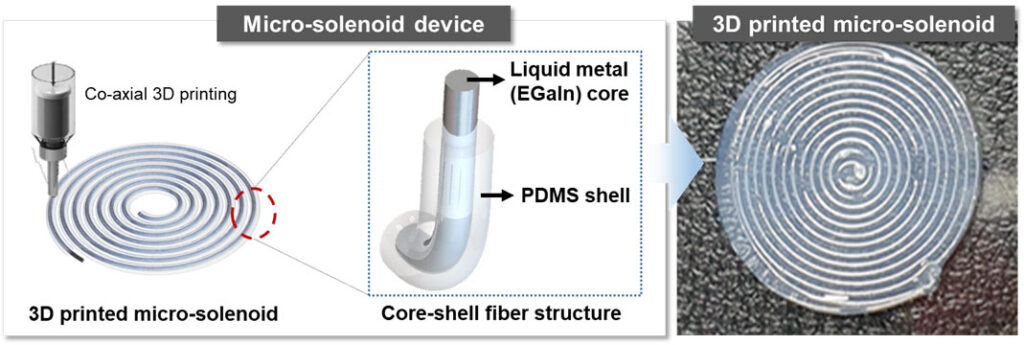
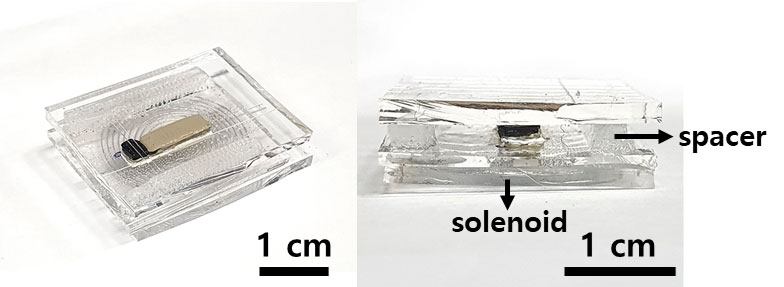
Figures of another 3D printed device, provided by Steve Park.
"Keep working at it!"
Professor Park wants to end our talk by talking about how printers like CELLINK’s BIO X6 also have a lot of potential for implants, to replace for example vessels or cartilage. While his own research interest there is on the biocompatibility and mechanical properties of the materials, his group has also used the BIO X to print synthetic organs for surgical training, which you can read more about in this paper here.
He ends our call with great advice for prospective and junior researchers:
“Keep working at it. The right idea won’t come straight away, but if you keep working on a few small ideas at a time, eventually some very novel ideas will come around.
Keep looking at different papers, see what other people are doing, become familiar with the field, try different things, and eventually, you could come up with groundbreaking technology.
It’s not a matter of how smart you are but how devoted, dedicated and passionate you are in the field. I believe anyone can come up with something very innovative.”
Learn More
Website: https://steveparklab.kaist.ac.kr/
Paper 1: https://www.nature.com/articles/s41467-022-30427-z
Paper 2: https://www.nature.com/articles/s41467-024-44822-1
Get a deeper understanding on soft electronics and 3D bioprinting in our blog: “Understanding Bioelectronics: How Bioprinting is used to Print Soft, Conductive Materials“.
Image Credit
Images “Figure 1E” and “Figure 6” are licensed under CC BY 4.0, and are collected from:
Lee, GH., Lee, Y.R., Kim, H. et al. Rapid meniscus-guided printing of stable semi-solid-state liquid metal microgranular-particle for soft electronics. Nat Commun 13, 2643 (2022). https://doi.org/10.1038/s41467-022-30427-z
